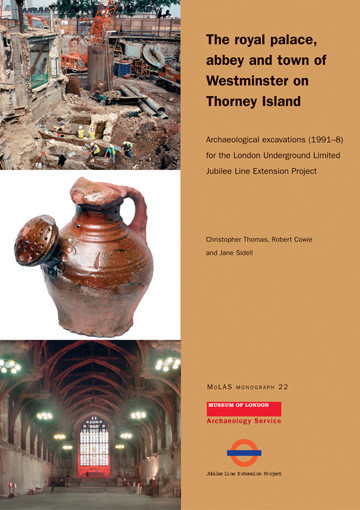
Format: Paperback
Pages: 224
ISBN: 9781901992502
Pub Date: 29 Mar 2006
Series: MoLAS Monograph
Illustrations: 144 mainly col illus, 56 tabs
Description:
The Palace and Abbey of Westminster provide one of the most familiar images in the world. From its beginnings on an island surrounded by the Rivers Thames and Tyburn more than 7000 years ago, the site became the most important centre of English history from the 11th century onwards. The palace, which started as one of many royal residences, became the principal home of the English monarchs until it was damaged by fire during the reign of Henry VIII.
The former royal chapel of St Stephen became the home of the House of Commons and the palace, with the rise in the power of Parliament in the mid 17th century, once again took centre stage in English history. The abbey, one of the richest and most important monastic establishments in England, was also a royal church, home to the coronations of all English monarchs since Edward the Confessor and mausoleum to many of Englands royal houses. This book publishes the archaeological work undertaken for the Jubilee Line Extension Project in the 1990s and a series of other archaeological investigations in and around the Palace of Westminster. It starts with the origins of the settlement on Thorney Island over 7000 years ago and discusses the evidence from the later prehistoric, Roman and Saxon periods before describing the development of the palace up to the fire of 1834. Important aspects of this work are the understanding of the varying environmental conditions around the island and the integration of antiquarian observations to provide an up-to-date synthesis of our current knowledge.
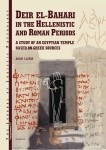
Format: Hardback
Pages: 470
ISBN: 9788391825037
Pub Date: 15 Mar 2006
Imprint: Journal of Juristic Papyrology
Series: JJP Supplements
Illustrations: c. 300 illus
Description:
The temple of Queen Hatshepsut at Deir el-Bahari at Luxor is one of the most fascinating architectural monuments of Ancient Egypt. It has been explored and reconstructed by Polish archaeologists for several decades and the present volume is the most recent result of these activities. The author tracks the history of the sanctuary in the Ptolemaic and Roman periods when it housed a lively cult of two Ancient Egyptian `saints', the deified sages Amenhotep son of Hapu and Imhotep.
The book contains the complete edition of Greek sources connected to this cult, including 320 inscriptions left by pilgrims on the walls of the temple, as well as several ostraca and votive monuments. On the basis of this material, different aspects of the cult are discussed in a synthetic part of the book. These include: the topography of the cult and its history; gods worshipped in the temple; forms of the cult; the economic side of the cult; the visitors of the temple. The study closes with a chapter devoted to Deir el-Bahari in the Late Antique period when the place was frequented by a pagan corporation of ironworkers from Hermonthis.
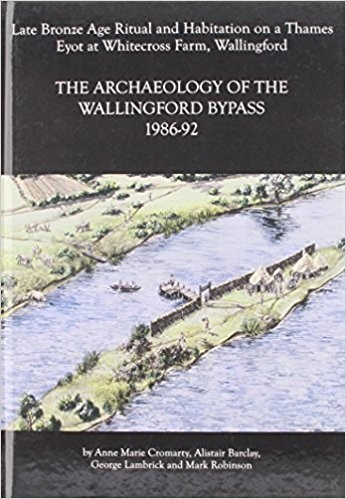
Format: Hardback
Pages: 264
ISBN: 9780947816674
Pub Date: 12 Mar 2006
Series: Thames Valley Landscapes Monograph
Illustrations: 70 illustrations, 22 plates
Description:
The site at Whitecross Farm, including timber structures located on the edge of the eyot, and a substantial midden and occupation deposit has been securely radiocarbon-dated to the late Bronze Age. The late Bronze Age artefact assemblages are suggestive of a high-status site, with a range of domestic and ritual activities represented. The bank of the Grim's Ditch earthwork was found to have preserved evidence of earlier settlement, dating to the Neolithic and Bronze Age, and a sequence of cultivation, including ard marks and 'cord-rig' cultivation ridges.
Pottery and radiocarbon analysis dated the earthwork to the end of the late Iron Age or the early Roman period. A multi-period settlement, consisting of pits, a waterhole, postholes, gullies and field systems, was identified at Bradford's Brook, Cholsey. The main periods represented are late Bronze Age and Romano-British, while a small quantity of Saxon pottery indicates limited Saxon activity. A large pit containing late Bronze Age pottery, a cattle skull, waterlogged wood and plant remains, a complete loomweight and flint flakes has been interpreted as a waterhole. A series of radiocarbon dates were obtained for deposits within this feature. All three sites are discussed individually as well as within their local, regional and national contexts. Chapter 7 provides an overall discussion of later Bronze Age themes that have arisen through the excavation and analysis of these sites.
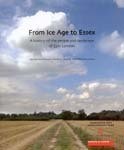
Format: Paperback
Pages: 64
ISBN: 9781901992618
Pub Date: 12 Feb 2006
Description:
This book presents a short history of human habitation in East London, based on archaeological findings at gravel sites between 1963 and 1999. To find the beginning of this story we have to go back half a million years, to the time when advancing ice sheets pushed the Thames southwards to its present course, depositing the river gravels that exist across East London today. Archaeological work on the East London gravels began when finds from gravel pits were given to local collectors and museums.
Many spectacular discoveries were made in the era when gravel was dug by hand; they include a Roman stone coffin found near Dagenham in 1928 and the rich Early Saxon cemetery with glass drinking horns from Gerpin's Pit, Rainham, uncovered in 1937. The archaeological sites which make up this story have names which speak of a time before London's urban sprawl reached eastwards: Manor Farm, Great Sunnings Farm, Whitehall Wood, Great Arnold's Field and Fairlop Quarry, to name but a few. Discoveries have revealed the ancient landscapes of East London and a history of human occupation from the third millennium BC right up to the 19th century. The finds include evidence of where people lived, and how they made a living and viewed themselves. These settlement patterns, economic systems and cultural identities changed over time and contributed to the form of today's East London.
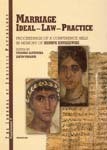
Format: Hardback
Pages: 280
ISBN: 9788391825044
Pub Date: 12 Feb 2006
Imprint: Journal of Juristic Papyrology
Series: JJP Supplements
Description:
The book collects 13 papers delivered at a conference held in Warsaw in April 2004, devoted to the memory of an eminent Warsaw Papyrologist and Romanist, Henryk Kupiszewski. The authors of the book, leading scholars in the field of Legal History, Roman Law and Canon Law studies as well as Papyrology, used different methodological tools, proper for their disciplines, to present the multifaceted reality of marriage in Graeco-Roman Antiquity.
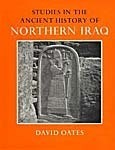
Format: Hardback
Pages: 176
ISBN: 9780903472197
Pub Date: 01 Feb 2006
Illustrations: b/w illus, 16 b/w plates
Description:
This is a facsimile reprint of the trail-blazing book by David Oates, originally published by the British Academy in 1968 and out-of-print for too long. It is primarily the report of his survey and excavation of sites in northern Iraq between 1954 and 1958, but it is at the same time a memorial to the great explorer, Sir Aurel Stein, whose pioneer fieldwork on the Roman frontiers in Iraq in 1938-39 provided the initial stimulus.

Format: Paperback
Pages: 224
ISBN: 9781842172049
Pub Date: 28 Jan 2006
Illustrations: b/w figs and pls
Description:
The importance of context has been extensively discussed in recent years. This volume attempts to address the fragmentation and misconceptions that have developed around context in archaeology, highlighting the common threads that link together varying contextual perspectives. The first part of the book examines the concept of archaeological context by offering a critical assessment of its 'historical' development.
The second section presents a number of case studies, and the third section discusses the management of archaeological material. Finally, part four takes the discussion on context further, setting the content of the book in a wider perspective.
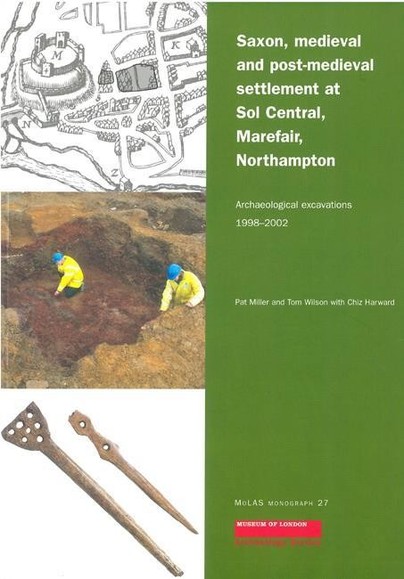
Format: Paperback
Pages: 81
ISBN: 9781901992571
Pub Date: 24 Jan 2006
Series: MoLAS Monograph
Illustrations: 76 b/w illus, 31 tabs, CD
Description:
Excavation work by Northamptonshire Archaeology and MoLAS revealed residual prehistoric and Roman artefacts and Middle Saxon settlement evidence in the form of a single sunken-floored building. Activity intensified in the Late Saxon to Norman period, when metalworking, crop processing and bone working took place at the site. The establishment of buildings suggests the main Saxon settlement around St Peter's Church spread northeastwards towards the limits of the town.
A cemetery was established on the site in the 10th century and associated with the chapel of St Martin in the 12th century, from which 72 burials were excavated. The area continued to develop during the medieval period, with construction of timber and stone buildings and intensifying industrial activity represented by pits, hearths and smithing debris. The cemetery remained in use until the mid 13th century. By the 14th century the route of Pike Lane was established and evidence has been found of metalworking, cereal processing, animal husbandry and butchery, and small-scale tanning. Use of the area declined during the 15th and 16th centuries.

Format: Hardback
Pages: 246
ISBN: 9781902937298
Pub Date: 18 Jan 2006
Series: McDonald Institute Monographs
Description:
This volume, number six in the Çatalhöyuek Research Project series, draws on material from Volumes 3 to 5 to deal with broad themes. Data from architecture and excavation contexts are linked into broader discussion of topics such as seasonality, art and social memory. Rather than assuming that the work of the project is finished once the basic excavation and laboratory results have been presented in Volumes 3 to 5, it has been thought important to present more synthetic accounts that result from the high degree of integration and collaboration which the project has strived for at all stages.
In this synthetic volume we most clearly describe the stories we have been telling ourselves during the data recovery/interpretation process. This volume thus provides a contextualisation of the work carried out in Volumes 3 to 5; it records the framework of thought within which the data were collected and studied, but it is also the result of the interpretation that occurred in the interaction with data.

Format: Hardback
Pages: 506
ISBN: 9781902937281
Pub Date: 18 Jan 2006
Series: McDonald Institute Monographs
Description:
Volume 5 deals with aspects of the material culture excavated in the 1995-99 period. In particular it discusses the changing materiality of life at the site over its 1100 years of occupation. It includes a discussion of ceramics and other fired clay material, chipped stone, groundstone, worked bone and basketry.
As well as looking at typological and comparative issues in relation to these materials, the chapters explore themes such as the specialisation and scale of production, the engagement in systems of exchange, and consumption, use and deposition. A central question concerns change through time, and the degree and speed of this change. The occupants of the site increasingly get caught up in relations with material objects that start to act back upon them.
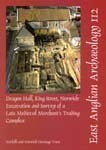
Format: Paperback
ISBN: 9780951787816
Pub Date: 31 Dec 2005
Series: East Anglian Archaeology Monograph
Illustrations: p, 25pls, 95figs;
Description:
When a wealthy merchant built Dragon Hall in 1427 there had already been stone buildings on the site for 140 years, while the origins of settlement here lay in the period c. 9751025. Some of the buildings used by these first settlers were uncovered during the recent work at Dragon Hall, along with evidence for a small riverside community within an extra-mural Late Saxon suburb.
Until the mid 13th century the site comprised three properties engaged in small-scale craft and industry, alongside horticulture and keeping livestock. At this time there appears to have been little interest in the commercial possibilities of the nearby river. By the early 1300s, however, the site had passed into the hands of the professional and ecclesiastical elite. The earliest known document relating to the site is a deed from 1289 which records a land transfer between the Abbey of Woburn and a Norwich clerk, John Page. Both used the site to build substantial stone houses. One reason for the abbeys interest in the property was probably its situation between a river flowing through the great medieval herring town of Yarmouth and a cardinal road through Norwich providing an ideal base from which to process fish and dispatch them inland. The early 14th-century remnants of Pages hall house survive today within Dragon Hall. The two holdings were conjoined during the second half of the 14th century, when the site was unified by the Midday or Clere families. In the late 1420s an ambitious construction programme commenced, probably by local merchant Robert Toppe, which resulted in Dragon Hall itself. The hall house was substantially rebuilt, and its service end embedded within the new trading hall. The first floor of the new hall provided the huge open space within which to store and display goods, and an office above the former service rooms from which to conduct business. The circulation of visitors was carefully regulated: divisions between public and private space are signalled by the quality of workmanship on show. A road which had linked the Midday/Clere complex to the street and river was now blocked by the warehouse and terminated beneath the first-floor showroom. After Toppes death the complex passed into the hands of local gentry until, in 1619, the great holding began to be sub-divided. Some of the buildings, including the abbey of Woburn's stone house, were demolished, and others rose in their place. A metalworking shop was eventually built on the site of one of the Woburn buildings and by the mid-18th century parts of the hall house were being used as an inn (The Three Merry Wherrymen, later the Old Barge Inn). By 1935 the site housed at least 34 individuals. As the population of the site rose so the quantity and variety of their discarded pottery increased. The collection of early modern ceramics from the site is currently without national parallel. Much of this came from the inns, as did four commemorative clay tobacco pipes stamped God Bless King George. Post-war King Street was briefly prosperous but the dwindling commercial use of the river initiated a decline in fortunes until by the early 1990s almost all commerce and industry had gone. Ongoing regeneration of the street reflects renewed interest in inner cities. At the point when Dragon Hall is once again looking forward to a sustainable future it is perhaps auspicious to be offering the definitive account of the sites first thousand years.

Format: Paperback
Pages: 399
ISBN: 9788779340053
Pub Date: 31 Dec 2005
Series: The Dolphin
Description:
What is human nature? How is language related to thought -- and should the connection be investigated socially or scientifically? Is external reality coherent or fragmented?
What are the foundations of rationality, and how trustworthy are they? Such questions have bedevilled thinkers for millennia. Contemporary scholars have harnessed enormous resources to find answers, yet their inquiry is invariably constrained by the tunnel vision of academic specialisation. This issue of The Dolphin seeks to establish common ground among the disciplines examining the mind–brain continuum. Among those meeting the editors' challenge to think outside the disciplinary box are Noam Chomsky, John Searle and Steven Pinker, as well as a dozen others from the fields of neuroscience, linguistics, philosophy, cognitive science, English, computer science and ethnography. The implicit framework that results should help researchers in all fields locate the diversity of human knowing within a joint ontological perspective.
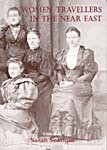
Format: Paperback
ISBN: 9781842171615
Pub Date: 31 Dec 2005
Series: ASTENE Publications
Description:
Contents: Introduction ( Sarah Searight ); Travelling to post: Lady Liston, an ambassadress in Constantinople ( Deborah Manley ); Two feisty ladies in the Levant: Princess Caroline and Lady Craven ( Charles Plouviez ); Travels in the Slavonic provinces of Turkey-in-Europe: Miss Muir Mackenzie and Miss Irby ( Dorothy Anderson ); Three travellers in nineteenth-century Egypt: Sarah Belzoni, Amelia Edwards and Margaret Benson ( Megan Price ); Lucie Duff Gordon: a woman's perception of Egypt ( Sarah Searight ); Governess to the Grand Pasha of Egypt: Emmeline Lott ( Alix Wilkinson ); The unknown pilgrimage to Sinai ( Deborah Manley ); Archaeologists' wives as travel writers ( Elizabeth French ); Women's perceptions of, and perceptions of women in, Egypt's Eastern desert ( Janet Starkey ).

Format: Hardback
Pages: 275
ISBN: 9781902937342
Pub Date: 15 Dec 2005
Series: McDonald Institute Monographs
Illustrations: 143 ills., 36 tables
Description:
How were early stone tools made, and what can they tell us about the development of human cognition? This question lies at the basis of archaeological research on human origins and evolution, and the present volume fulfils a growing need among advanced students and researchers working in this field. The individual chapters by a range of leading international scholars approach stone knapping from a multidisciplinary perspective that embraces psychology, physiology, behavioural biology and primatology as well as archaeology.
The skills and behaviour of humans and their primate relatives are key parts of the enquiry. The result is a better understanding of early human engagement with the material world and the complex actions required for the creation of stone tools. The book contains many illustrations and is extensively referenced, and provides a landmark contribution in this field.

Format: Paperback
Pages: 178
ISBN: 9780954557522
Pub Date: 01 Dec 2005
Illustrations: many col illus
Description:
Castle studies have been transformed in recent years with a movement away from the traditional interpretation of castles as static military structures towards a wider view of castles as aesthetic symbols of power, with a more complicated relationship with the landscape. Supported by numerous colour photographs of the most `tangible' remains of the Middle Ages, this clearly written and very accessible study makes the most current ideas about the role of the castle available to a wider and more general readership. Robert Liddiard discusses the history of castle building before and after the Norman Conquest, considering the Norman and medieval definition of the castle, and he reassesses the military defensive capabilities of castles, demolishing the idea that they were built in response to military policy.
Instead, they proved a very effective means for aristocrats to display their status. Liddiard evaluates the role of the castle in warfare and the extent to which sieges played a part in conflicts before turning his attention to the varied role of the castle in the landscape (and in the lives of those who lived in and around it) and its relationship to its environment, arguing that the aesthetic setting of many castles was not a happy accident. Throughout, the study is supported by numerous case studies which examine the archaeological, architectural and historical evidence for numerous castles.
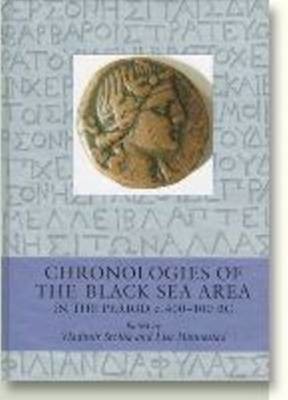
Format: Hardback
Pages: 360
ISBN: 9788779341326
Pub Date: 30 Nov 2005
Series: Black Sea Studies
Illustrations: illus
Description:
A renewed interest in chronological problems has surfaced in recent years. In this volume deriving from the first international conference of the Danish National Research Foundation's Centre for Black Sea Studies thirteen contributions by scholars from Russia, Ukraine, Romania, USA, Canada, Belgium and Denmark review and discuss the elements on which the chronology used in Black Sea archaeology and history in the period c. 400-100 BC is built up.
The subjects include: amphora and amphora stamp chronologies (Mark Lawall; Sergej Ju. Monachov; Niculae Conovici; Vladimir Stolba), coin chronology (François de Callataÿ), the Athenian pottery (Susan I. Rotroff), epigraphic evidence (Jakob Munk Højte), and a number of case studies presenting the material on which is based the dating of a series of Greek and barbarian/non-Greek sites and burial monuments on the northern shores of the Black Sea (Valentina V. Krapivina; Valeria Bylkova; Lise Hannestad, Miron I. Zolotarev, Ju. P. Zaytsev, Valentina I. Mordvinceva).

















